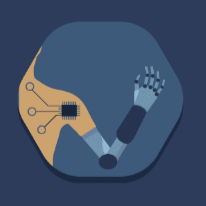
Advancements in Bionic Technology, One Step at a Time
In the United States, there are nearly 2 million people who have lot limbs. This figure includes an estimated 1,645 veterans who lost at least one limb between 2001 and 2015. Though movies such as Iron Man make bionic technology appear exciting and fascinating, the reality of living with limb loss in much more difficult.
To learn more, check out the infographic below created by Ohio University’s Online Master of Science in Electrical Engineeringprogram.

Add This Infographic to Your Site
<p style="clear:both;margin-bottom:20px;"><a href="https://onlinemasters.ohio.edu/blog/advancements-in-bionic-technology-one-step-at-a-time/"><img src="https://s3.amazonaws.com/utep-uploads/wp-content/uploads/sparkle-box/2019/07/26154342/OU-MSEE-2019-Advancements-in-Bionic-Technology_final-compressor.png" alt="" style="max-width:100%;" /></a></p><p style="clear:both;margin-bottom:20px;"><a href="https://onlinemasters.ohio.edu" target="_blank">Ohio University </a></p>Living Without a Limb
There is a common belief that most amputees are veterans, but the statistics say otherwise. For instance, individuals with a diabetic foot ulcer account for 85% of amputations. What’s more, amputations are on the rise: The rate of amputations increased to 50% between 2009 and 2015, up to 4.6 per every 1,000 adults. The increase in amputations was highest among those 18 and 64.
Statistics also indicate African-Americans are four times more likely to have diabetes-related amputation than Caucasian Americans. It should be noted that veterans may undergo amputations for injuries that are “service attributable” or caused by “off-duty incidents, such as motor vehicle accidents and training accidents.
Adapting to Amputations
Different demographics react different to dealing with amputations. Infants, children, and young adults tend to adapt well. However, preadolescents and adolescents often feel that their sexual identity is threatened. The elderly may also struggle to adapt if they have poor health, are socially isolated, and are experiencing trouble with finances. Additionally, veterans’ long-term adjustment and identity are influenced by coping approaches, as well as the military and political context of their injuries.
It’s also been indicated that individuals with specific personality characteristics may struggle to adapt. Narcissistic individuals, for example, may feel a loss of self-worth and dignity. People suffering from depression are also more likely to suffer dysphoria. Additionally, timid and self-conscious folks are more likely to suffer psychologically, and pessimistic or paranoid individuals may develop bitterness and resentment as they try to adapt.
Long-Term Effects of Amputations
One universal occurrence an amputee may experience following surgery are phantom limb sensations, although they usually go away rapidly. Amputees may also feel phantom pain in the missing limb, a phenomenon that may be caused by psychopathological symptoms or life stresses. Struggles with body image and sexuality can also be long-term issues.
Making Strides and Facing Challenges
Prosthetic experts face two main challenges: improving prosthetics control and reducing the cost of advanced prosthetics. These challenges have caused a few questions that specifically target prosthetic development, such as whether a prosthetic can be controlled by thoughts or if sensors can replicate the sense of touch.
Recent Advancements
One of the latest breakthroughs in prosthetics is the myoelectric-controlled prostheses. These prosthetics, which are most suitable for arms and hands, are controlled by electrical signals generated by muscles. However, the signals don’t enable totally accurate movements. The quality of control depends on the precision of sensor placement. Another advancement revolves around the concept of pneumatics. This form of prosthetic uses pressurized gas or air in mechanical joints to improve knee and ankle movement.
These advancements have helped lay the groundwork for companies to focus on future developments. Some of these developments include improving socket-based technology, and the integration of systems with the body to provide sensory feedback.
Luke: A Major Milestone
DEKA Integrated Solutions Corp. developed the LUKE arm, with funding from the Defense Advanced Researched Project Agency (DARPA), after eight years of research involving the VA. The device received FDA approval in May 2014 and is now commercially available. Two veterans were the first to receive LUKE arms in June 2017.
The LUKE Arm
The LUKE arm can perform multiple simultaneous movements, features ten powered joints, and is powered by rechargeable lithium-ion batteries. Internal measurement units (IMUs) worn on the user’s shoes are used to control arm functions. It is capable of six different grips: A power grip for large objects such as bottles and handles; a tool grip for grasping and triggering a tool and for typing; a fine pinch closed grip for small items; a fine pinch open that allows fingers to be extended; a lateral pinch for holding keys, pencils, and utensils; and a chuck grip for holding round objects like doorbells and balls.
Other key components to the LUKE arm include a pressure transducer and a linear transducer. When configured at the shoulder, the powered joints can include a wrist rotator, an elbow flexor, a humeral rotator, and a shoulder abductor.
Conclusion
Private companies, federal agencies, and universities are working together to advance the field of prosthetics. Reaching the next milestone – integrating systems with the body to improve sensory feedback – will require the expertise of electrical engineers.